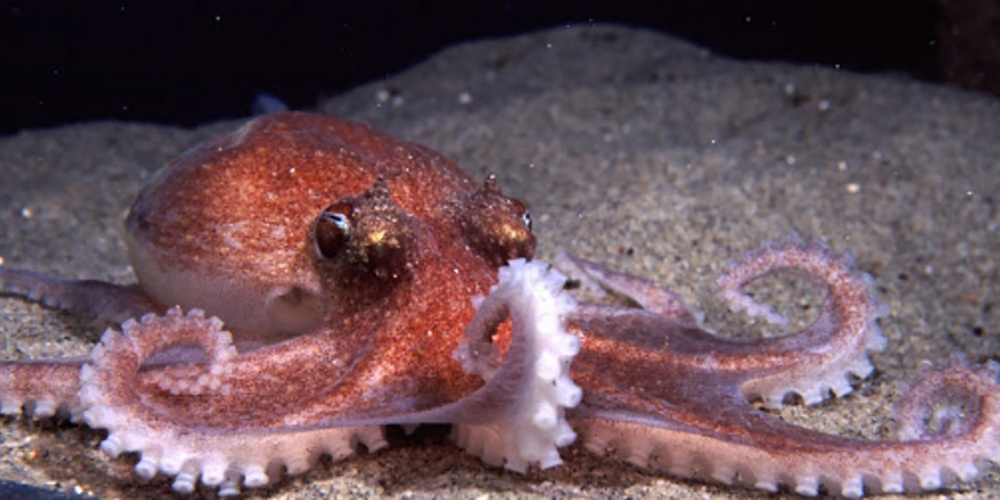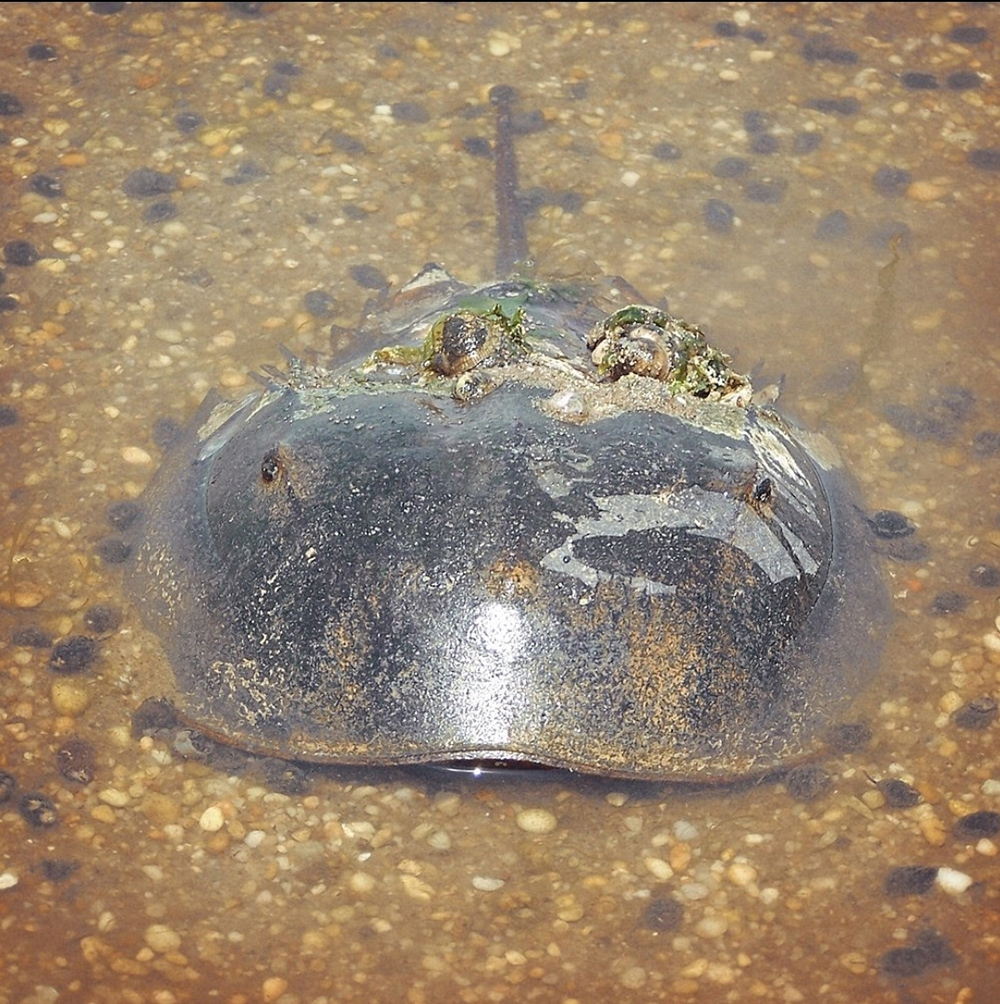By Sarah Fertsch
Do you ever think about what’s on the ocean floor of the Jersey Shore? It’s probably the last thing you want to think about, especially when you’re boogie boarding with your kids on a hot summer day. Despite any creepy-crawly fears, learning about our friends under the sea will make you more conscious of your environment and island habitat! Here’s what you’ll find below the surface on your local NJ beach:
Harbor Seal
These puppy-like creatures are all around the beaches, especially in the springtime. According to the Conserve Wildlife Foundation of New Jersey, the Jersey shore is the largest “haul-out” site for harbor seals, meaning that seals travel across the east coast for mating and feeding. Seals are mammals, so they need to come up for air often, so they can be found in shallow waters, even in the summers. Adults can be about six feet long, weighing almost 300 pounds. Even though they are very cute, these creatures can be dangerous, so make sure to keep your distance if you spot a seal nearby.
Atlantic Octopus

Although rare in colder waters, you might catch an Atlantic Octopus on the bay off Atlantic City. Octopuses hunt at dusk, searching for mollusks, crabs, and lobsters. It paralyzes its prey by secreting poison through its tentacles and then uses its suckers to wiggle its meal out of its shell. These animals are incredibly smart, smart enough to catch a crab out of a trap or unscrew a jar. Although octopuses are colorblind, they have special receptors that allow them to blend into their environment, like a chameleon. You’ll typically find an octopus around coral or rocks, so be careful when exploring the seafloor!
Humpback Whale
Humpback whales are common in almost every ocean, but populate Jersey waters when the bay is cold, particularly in the spring, winter, and fall. They search for food, eating up to 300 pounds of krill and small crustaceans per day! They reach up to 60 feet in length, with females being larger than males. Humpback whales have the largest fin of any other whale species. This species is on both the federal and state endangered species list, so be careful about maintaining your fishing nets so whales don’t get caught. For a fantastic look at whales, check out whale-watching cruises in Atlantic and Cape May counties!
Lined Seahorse
Sometimes called the Northern Seahorse, these creatures can be found between rocks and coral across the Atlantic Ocean, from Nova Scotia to Panama. They span in color, ranging from yellow to black. They feed on tiny crustaceans and use their beak to suck their prey out of their shell. Uniquely these animals breed monogamously, for life, and the males get pregnant and have babies!
Horseshoe Crabs
These bizarre-looking creatures are a blast from the past – one of the last remaining creatures from the Paleozoic Era (445 million years ago). Their blood contains a special clotting agent, limulus amebocyte lysate (LAL), that assists humans with infection detection and with tolerating prosthetic devices such as knee replacements and heart valves. These crabs are common on the Jersey Shore and around the Delaware Bay. They are most common between May and August, so keep your eyes peeled at the beach!
Cownose Ray
This stingray is common around the Chesapeake Bay and Atlantic shorelines. They have a wingspan of three feet and can weigh up to 50 pounds. Their diet consists of various types of clams, which draw the rays close to the beach. Mating takes place between June and July, and after an 11-month gestation period, females raise a single pup for the rest of the summer. Although they appear as if they are skates or stingrays, cownose rays fall into a category of their own. Jersey Shore, cownose rays are often mistaken for shark sightings!

Moon Jellyfish
You’ve definitely seen these along the beach. These rounded discs come to mate on the Atlantic coast and can be identified by their translucent color and clover design in the center. Moon jellies can be found close to the ocean’s surface because they primarily feed on plankton, which grow in the sunlight. That means it’s often eaten by sea birds, though. Its sting is relatively benign to humans (if you are stung, you may feel a mild stinging sensation that should disappear quickly).
Sand Tiger Shark
Somewhat scary to think about, this NJ shark grows up to 10 feet long and up to 300 pounds. It’s sometimes referred to as the “ragged-tooth shark” because its toothy grin makes it stand out compared to other shark species. These sharks prefer warm water, so they are most common along the Jersey Shore in the summer. They migrate to shallower waters in the summer as well, searching for small fish to feed on. There’s some evidence to indicate that the Delaware Bay area is a primary mating ground for these sharks, according to the Conserve Wildlife Foundation of NJ. Sand Tiger sharks are critically endangered in some parts of the Atlantic Ocean and are considered a Species of Concern for NJ.
Loggerhead Sea Turtle
Sea turtles populate all areas of the Atlantic Ocean, but migrate to the Jersey Shore during the summer to lay eggs on the beach. These turtles can be identified by their reddish-brown color and large head. They primarily eat jellyfish and crustaceans. Loggerhead turtles are currently threatened by beach development and ocean pollution, so be sure to care for turtles if you spot a mother or eggs on the beach near you.

Hermit Crabs
Hermit crabs are not crabs at all! In fact, they are actually a species of shrimp that is protected by a shell. There are two types of hermit crabs – land crabs, which breathe with lungs, and ocean crabs, which breathe with gills. Hermit crabs are so entrenched in their shell that if they were threatened by a bird, their bodies would rip apart easier than a crab would be ripped out of its shell! Speaking of hermit crabs, check out Martin Z. Mollusk, the mascot of Ocean City!
In conclusion, make sure to always keep the health and safety of yourself and these animals in mind. If you spot a sea animal while you are basking on the beach, keep your distance. If you notice a marine mammal in trouble, contact the Marine Mammal Stranding Center at 609-266-3508.
Sarah Fertsch was born and raised in Egg Harbor Township, and holds a dual degree in public relations and political science. Prior to joining Shore Local full-time, she worked at a CSPAN affiliate, writing about Pennsylvania legislation. When she isn’t writing, Sarah enjoys painting, horseback riding, and Crossfit.










